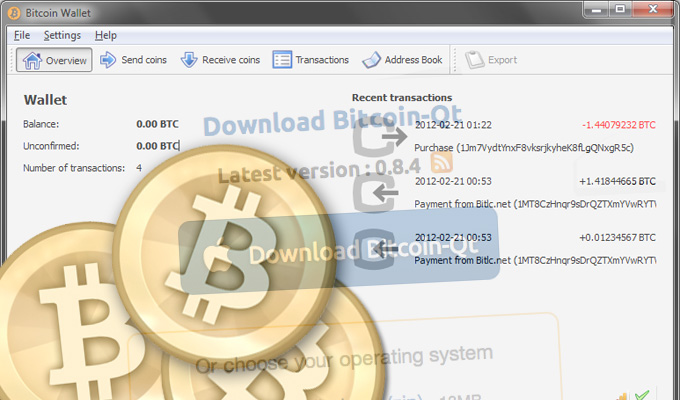
Bitcoin-Qt can be used as a desktop wallet for payments or as a server utility for merchants and other payment services.
Bitcoin-Qt is the so – called" official " client of the network, which is developed and promoted by Bitcoin Foundation, a non-profit organization uniting core developers and responsible for the community's contacts with corporations and governments. Bitcoin Foundation branches are opened in several dozens of countries around the world.
Bitcoin-Qt is one of the popular varieties of the online coin purse, which has a complex multi-level security mechanism. Despite the fact that this service was created a long time ago, the developers are constantly working to improve it and implement technical innovations and updates. For frequent use of the resource in the case of the provision of services or transactions of sale and purchase it is recommended to install the original client. Next, let's talk about how to do it quickly and painlessly.
This wallet belongs to the category of the so-called "thick purse", during the installation of which, there is a download of information about all the operations carried out by users since the appearance of the cryptocurrency. After the completion of a long synchronization, you can safely proceed to the use of Bitcoin wallet Qt.
History[edit]
The first wallet program called Bitcoin-Qt was released in by Satoshi Nakamoto as open source code. Bitcoin-Qt, also called "Satoshi client" is sometimes referred to as the reference client because it serves to define the Bitcoin protocol and acts as a standard for other implementations. As of version , Bitcoin-Qt has been renamed "Bitcoin Core" to more accurately describe its role in the network.
Initially, Satoshi Nakamoto delegated the right to make decisions on changing the code of the official version of the wallet to Gavin Andresen, who, in turn, transferred it in to Vladimir van der Laan. The introduction of any changes to the next release of the program except the main developer agrees with other developers of the kernel: Jeff Garzik, Gregory Maxwell and Peter Wooll.
Features[edit]
- Compatibility with Linux (both GNOME and KDE), Mac OS X and Windows
- All functionality of the original wxWidgets client
- Asks for confirmation before sending coins
- CSV export of transactions
- Clearer transaction list with status icons and real-time filtering
- Progress bar on initial block download
- Languages: Dutch, English, German, many more
- Sendmany support in UI (send to multiple recipients in one transaction)
- Multiple unit support, can show subdivided bitcoins (mBTC, µBTC) for users that like large numbers (only decimal units)
- Splash screen that details progress
Advantages[edit]
Among the obvious advantages of users are the following:
- Always asks for confirmation before sending funds.
- The ability to divide the account balance at options: confirmed and unconfirmed.
- The ability to send funds to multiple recipients with a single payment.
- Display the payment format mBTC and µBTC.
- Reliable multi-level protection mechanism.
Disadvantages[edit]
The most wrong feature of Qt-client is that it is hidden Bitcoin-addresses in the graphical interface they are nowhere. This implies several problems.
- First, the graphical interface of Bitcoin-Qt displays only the total balance. However, as I said, in fact, there can be several addresses, and each has its own strictly defined balance. If bitcoins came to any address, they can be sent only from this address, they can not be "teleported" to another address in the wallet without displaying this movement in the blockchain. That is, from one address to another within the bitcoin wallet, you can only move bitcoins through a public transaction.
- The second problem is related to the return of "delivery" to addresses — this is one of the features of the bitcoin Protocol. In the technical description the digital coin is defined as a chain of digital signatures. If, for example, to a certain address first came 2, bitcoin, and then another 0,, then it will be two digital coins of corresponding denominations. "Remelting" such coins into new ones is possible only with the help of transactions. For example, to send someone 1 bitcoin can or remelting coin 2, bitcoin in coins of 1 and 1, bitcoin, or purge both coins in coins of 1 and 2, The remaining coin is returned back to any of the sender's addresses. In the above examples, no Commission was paid, in fact, it is desirable to pay some Commission to have a guarantee that the transaction will be quickly included in the block. For example, this option is possible: remained at the original address, 1 bitcoin came to the recipient, returned to one of the sender's addresses, and went to the "alloy" for the coin that the miner who found the block will receive as a reward. And in the case of Bitcoin-Qt, it is not known which of the addresses was used to receive the delivery.

-
-